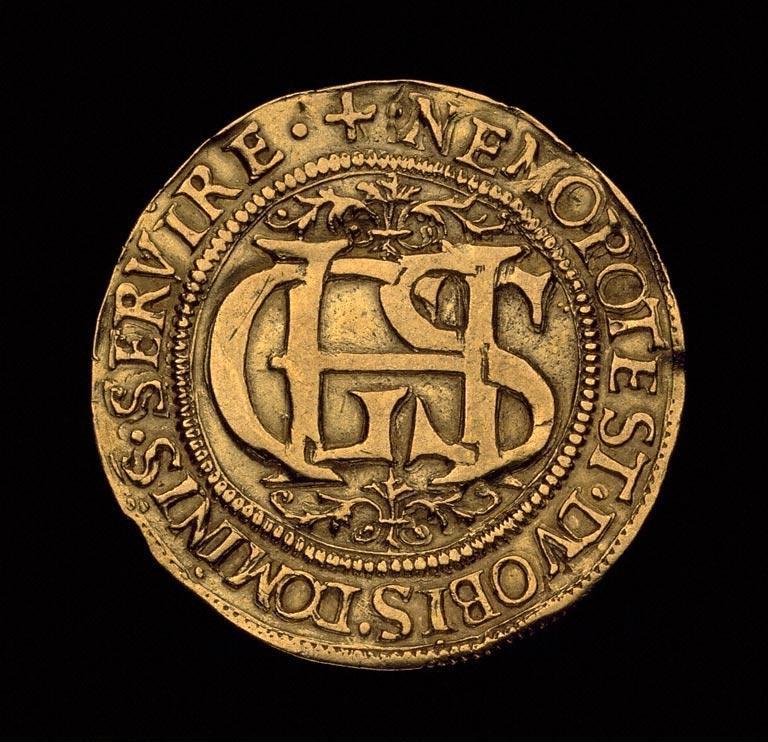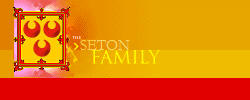|
 Before he was twenty, George Seton
married Isabel, daughter and heiress of Sir William Hamilton
of Sanquhar, at the time one of the Senators of the College
of Justice and Captain of Edinburgh Castle. Before he was twenty, George Seton
married Isabel, daughter and heiress of Sir William Hamilton
of Sanquhar, at the time one of the Senators of the College
of Justice and Captain of Edinburgh Castle.
She
brought him the Manor of Sorn and other lands in Kyle, which
lands were later confirmed on their youngest son Sir William
Seton of Kylesmuir, Knight, who was named after his maternal grandfather, and
who was himself Chamberlain to the Hamilton Earl of Arran, his uncle.
A
number of gold medals were struck to commemorate this union,
on account, especially, of the bride’s relationship to the
Earl of Arran, Regent of Scotland and Duke of Chatellerault
in France. The medal above is now very rare, and is
described by Francisque Michel in his Civilization in
Scotland.
Sir William Hamilton of Sanquhar,
Isabel's father (Lord Treasurer to James V), and George
Seton, 6th Lord Seton, invited his Majesty to Sorn Castle,
in Ayrshire, to be present at the marriage of his daughter
to the future 7th Lord Seton.
On the eve of the
appointed day the king set out on the journey; “but he had
to traverse a long and dreadry tract of moor, moss, and miry
clay, where there was neither road nor bridge; and when
about half-way from Glasgow, he rode his horse into a
quagmire, and was with difficulty extricated from his
perilous seat on the saddle.
Far from a house, exposed
to the bleak wind of a cold day, and environed on all sides
by a cheerless moor, he was compelled to take a cold
refreshment in no better position than by the side of a very
prosaic well; and he at length declared, with more
pettishness than wit, that ‘if he were to play a trick on
the devil, he would send him to a bridal at Sorn in the
middle of winter.’
The well at which he sat and swore
is still there and is called the King’s Well; and the
quagmire in which his horse floundered is ironically called
the King’s Stable, from His Majesty's note that his horse
was now truly stabled there.
| 
